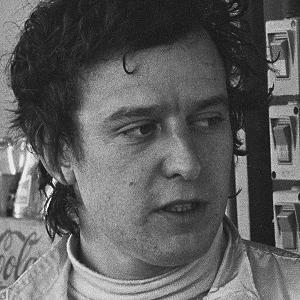The Motor Sport Interview: Jackie Oliver
1969 Le Mans winner, former F1 driver and Can-Am champ Jackie Oliver talks about his difficult relationship with Colin Chapman, taking the reins at Shadow and Arrows, and the arrogance of youth
Getty Images
Jackie Oliver still has his competition licence. Once a racer, always a racer. He’s been there, done it all. Le Mans winner, Can-Am champion, Formula 1 driver, founder of the Arrows F1 team and enthusiastic historic racer in his eighth decade.
From Minis in 1961 he broke into the big time with Lotus in Formula 2, making his grand prix debut in the F2 class in Germany. In 1968 Colin Chapman took him into the F1 team after Jim Clark’s death. He joined BRM in ’69 but his best results came in endurance racing, winning Le Mans and the Sebring 12 Hours in John Wyer’s Ford GT40. This was followed in 1971 by victory at the Daytona 24 Hours and the Monza 1000Kms and, without an F1 drive, he joined the Shadow team for the Can-Am series, winning the championship in 1974.
Oliver became team leader when Shadow went to Formula 1 in ’73, staying until 1977 when he left to establish the Arrows team with designer Tony Southgate, Alan Rees and engineer Dave Wass. The cars were often competitive but failed to win from 382 starts and he sold the team to Footwork which withdrew in 1993 when, in partnership with TWR, he revived Arrows and remained until 1999. Here, Jackie tells Motor Sport about the peaks and troughs of a rollercoaster career.
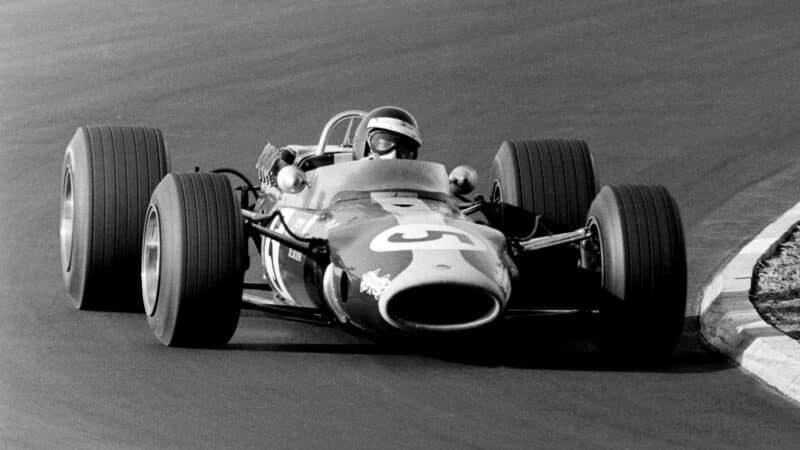
Jackie Oliver in an F2 race with Lotus at the Nürburgring, 1968 –but the boss preferred a different Jackie
McKlein
Motor Sport: When you started out in the 1960s the sport was totally different from what we have in the 2020s. Was it more fun and less intense than today?
Jackie Oliver: Yes, it was very far removed from the sport today, utterly different. There was no karting. It wasn’t a career, it was a hobby, fun to do, and there weren’t any professional drivers apart maybe from Stirling Moss. Those who did race cars, many of them aristocrats, became quite good at it and it was thanks to my dad, who’d made money in refrigeration, that I started club racing. I think he wanted to live life through his son, like many parents whose sons go racing today. You don’t know how good you are. It’s other people who judge that, and give you an opportunity to progress.
It’s this confidence in you that turns into ambition. I’d been racing a Lotus Elan, and then a Formula 3 Brabham, so when Lotus was looking for a driver for their F3 team Jimmy Clark recommended a Scottish rally driver, and Jim Endruweit, who became Colin Chapman’s team manager, suggested me for the test. I’d had previous F3 experience so the rally guy didn’t have a chance and I got the drive.
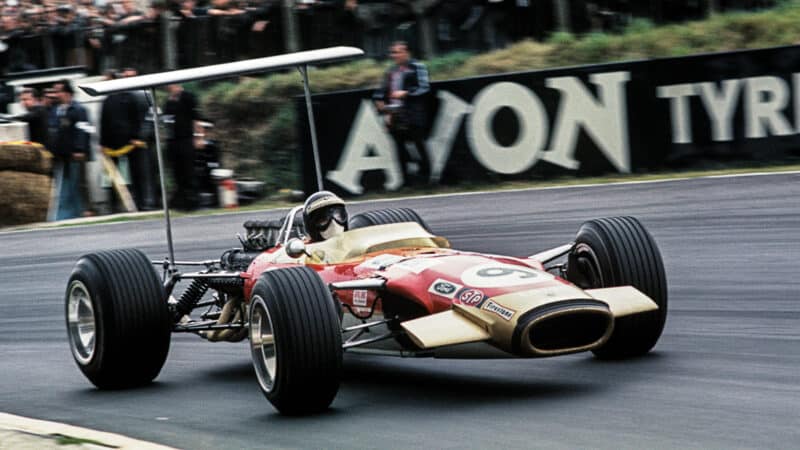
In the 1968 British Grand Prix, Oliver qualified his Lotus 49 second on the grid – but retired halfway in
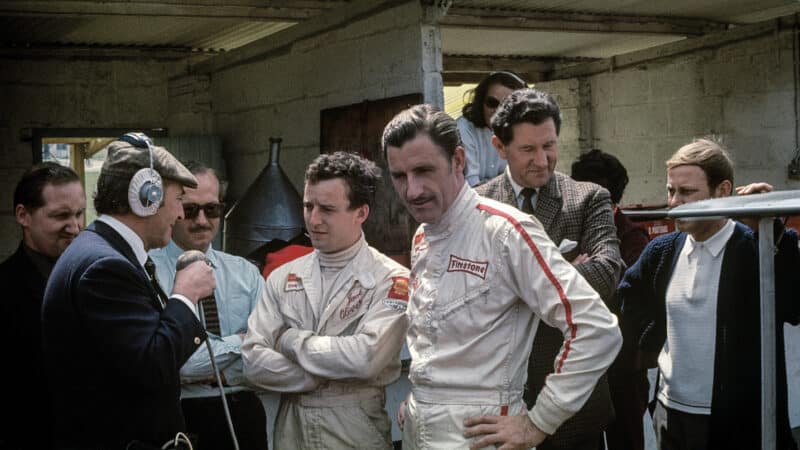
Oliver gets a grilling with Chapman and Lotus team-mate Graham Hill at Brands Hatch
MS: From here on you graduated to Formula 2 with Lotus, the start of what was often a rocky relationship with Colin Chapman.
JO: Colin was told that I’d be a good choice for the F2 team but he needed someone with sponsorship. I had got myself an agent, which was pretty unique back then, and we went to see a potential sponsor called Roger Frogley. Roger agreed to back me and we put the Herts & Essex Aero Club on the car. Colin said, “OK, that’ll do.”
“Colin Chapman was unique, a dynamo, like a whirlwind”
Ironically when Jimmy was killed in an F2 race in Germany I had this macabre opportunity of going to Formula 1. Graham Hill was team leader but I wasn’t nervous about it, I was very confident, a little bit of an arrogant young man. Colin was the worst person to try and bring on a young driver who’d just been dumped in Jimmy Clark’s seat. My first race was Monaco, so no opportunity for any testing, and on the grid he stuck his head in the cockpit and said, “Lad, no more than six people ever finish this race.” I didn’t know what he meant. He could have been more helpful, a bit of advice, and I might have got some points for the team. As it was, Bruce McLaren crashed on the first lap and, arriving behind him I had nowhere to go to avoid his car and hit the stationary McLaren. Colin didn’t have an arm around anyone’s shoulder. He designed the car, found the money, chose the drivers, he was unique, a dynamo, like a whirlwind, and he didn’t want me there. He had the best car. He wanted someone who’d already done it, and didn’t want to spend time messing around bringing young drivers on.
When I started I was calling him ‘Sir’ and he didn’t want any of that. He wanted me to tell him what he should be doing. When I led the British Grand Prix in the old car – he’d sold the new one to Rob Walker – Colin said nothing afterwards. I never felt he had any confidence in me and I was dismayed. I had always raced as Jack Oliver and Jim Endruweit told me later that it was Colin who entered me as Jackie because he’d wanted Jackie Stewart in the car but he’d turned it down because of Colin’s extreme passion for saving weight, which Jackie considered risky. The cars were the best, but a lot of things did break, and when BRM signed me I went from the best car to the worst but I’m glad I made that decision.
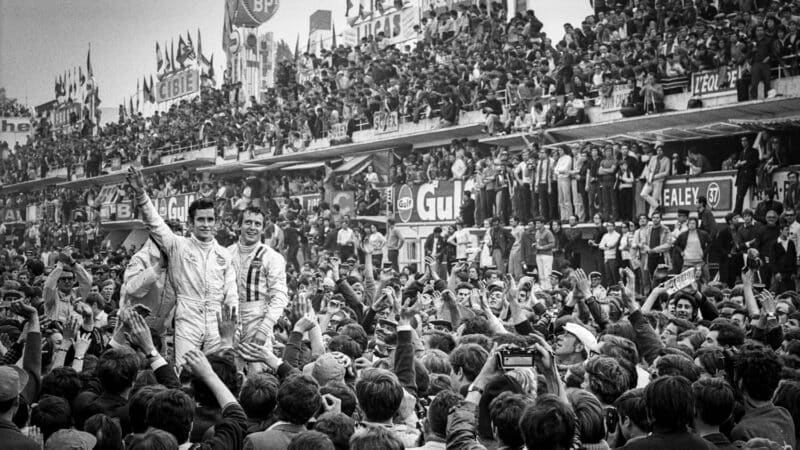
A smile at the end of theLe Mans 24 Hours in 1969 – victory for Oliver and Jacky Ickx in the JW Ford GT40, although Oliver didn’t like sharing cars with Ickx
DPPI
MS: Your biggest success, and best results, came in endurance racing with John Wyer’s Ford GT40 and his Porsche 917. Why was that period so rewarding for you?
JO: It was the best team I ever drove for, the best four years of my driving career. The way JW Automotive was structured was perfect, the responsibilities divided between the owner, the team manager and the design department. Each had control over their areas. They didn’t build their own cars. They took a winning car and used their own skills in endurance racing, focusing on tactics, pitstops, driver control, driving to a standard, all of which meant they finished the races. My success was down to them. They did it better than anyone else, first with the GT40 and later with the Porsche.
“That was me in the early ’70s. I spoke my mind and was a little arrogant”
I didn’t like being controlled in that way. It didn’t give me the pleasure of winning a single-seater race with just me in the cockpit from flag to flag. I never liked sharing. It was alright with Pedro Rodriguez, but I never liked sharing with Jacky Ickx. Pedro wanted me alongside him, Jacky never thought he needed me. In 1968 I shared with the Australian Brian Muir and he put it in the sand early in the race, destroyed the clutch. I was furious. Then I was back with Jacky. We won Le Mans in ’69, and then I left the team for a while before coming back to drive with Pedro in the Porsche. I learnt later that it was Pedro who wanted me back as his team-mate but long-distance racing wasn’t really what I enjoyed. What the team wanted was not always what I wanted as a driver – that was me in the early ’70s. I spoke my mind and was perhaps a little arrogant. When the JW Mirage came along I thought it was a terrible car, had all manner of problems, and I told them. They used the Cosworth V8, a great engine, but it wouldn’t do the 12- or 24-hour races. It was only good for the shorter races.
JW was fantastic for my career but I told John Wyer the team just wasn’t capable of building its own car – so let’s get one from Porsche. They’d done a fantastic job with the Ford GT40, with a 5-litre engine, and John Wyer understood this, so that’s why he went with the Porsche 917, because it was a known quantity.
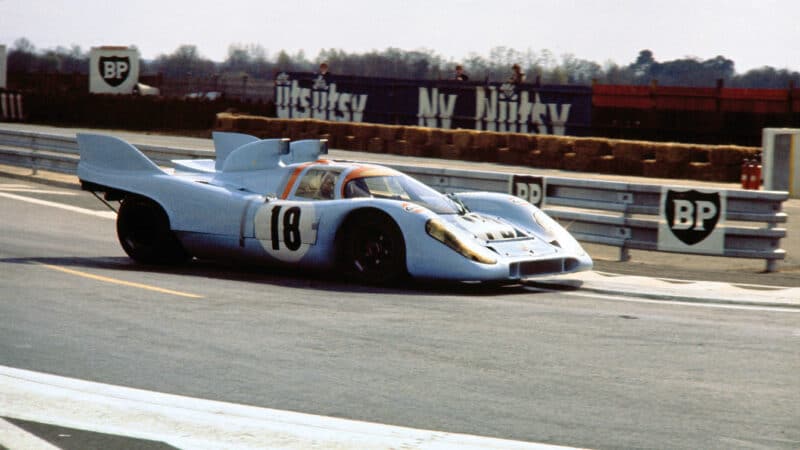
By the time of Oliver’s last outing in the Le Mans 24 Hours, in 1971, JW had switched to the Porsche 917
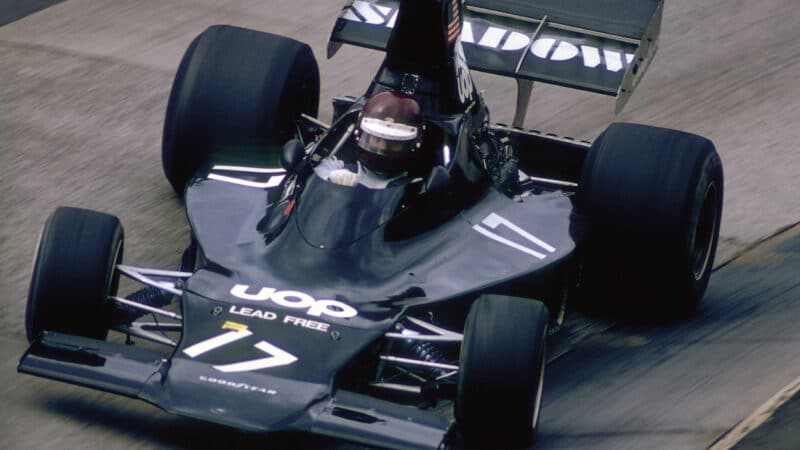
Oliver at the wheel of the Tony Southgate-designed Shadow DN1, 1973 German Grand Prix
MS: You didn’t have a full-time drive in Formula 1 in 1971 but you did some races for McLaren, and then in ’72 you went to America for Can-Am.
JO: Yes, three races for McLaren. It wasn’t a good time for the team after Bruce was killed. It was in disarray. They’d lost their owner and a great team leader. I knew Bruce very well and after he died they put me in the car. It was like Clark and Lotus all over again. At the end of the year I decided to focus on Can-Am with Shadow and then back into F1 as Shadow’s team leader in their first season in ’73.
I’d met Don Nichols in ’69. He was different from other owners. He was an entrepreneur, with a passion for motor sport and cars, and whatever he did he brought real flare. He asked me to drive for him in Can-Am and at first I refused because the car was very innovative and I told him it wouldn’t win races. He needed to get a new car designed, and he did. He got UOP oil to sponsor the team, and we won the championship in ’74.
We’d been using mechanics from England so I persuaded him to move it to Northampton. It was a good relationship. I wanted to get back to F1, but the phone wasn’t ringing, and I was going backwards and forwards from America to England, 33 times in one year. I was totally destroyed, mentally and physically exhausted. We built the Formula 1 cars with some very talented people, Alan Rees as team manager, Tony Southgate as technical director, and Dave Wass, our transmission engineer among others. Problem was that I was struggling to find the money, and the drivers, to keep the F1 team in Northampton. It was time to stop driving and Tom Pryce’s accident in South Africa made me realise I didn’t want to do it any more. Don was now into another business in America having lost the UOP support so, to cut a very long story very short, I bought the team from Don with money from Franco Ambrosio, the FA in the Arrows FA1, in ’78. He was an Italian businessman who’d sponsored Renzo Zorzi at Shadow. Don could never make up his mind whether he wanted to keep the team or sell it, so I had to make a decisive move.
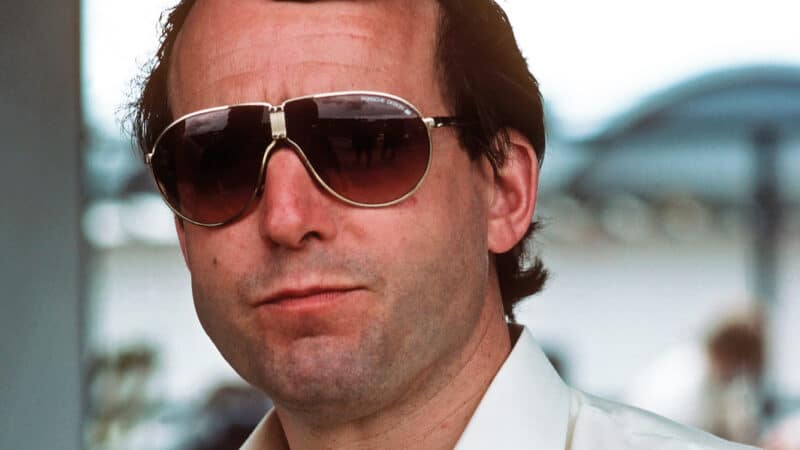
Overseeing Arrows affairs at the 1985 Brazilian GP. Left: the Shadow team
Getty Images
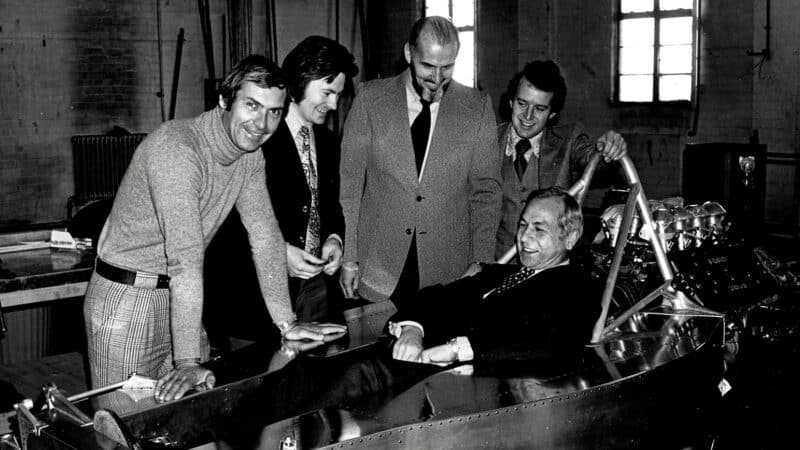
George Follmer, Southgate, Don Nichols and Oliver at Silverstone in ’73
MS: How did this all end up in a court of law amid allegations of copying the Shadow to create the Arrows FA1?
JO: Tony Southgate, who was still at Shadow, asked me if it was true I was starting my own team. I told him, “Yes, that’s right,” so he said he was on his way to join me in Milton Keynes. Before he left he took drawings of the Shadow DN9 with him which he shouldn’t have done because they had Shadow written on them. He thought he owned the rights because he’d designed that car as a consultant and not a Shadow employee. There was no point falling out with him, or Alan Rees. They were the two people I needed. Bernie [Ecclestone] helped me to survive because he didn’t want to lose a team from the grid and he decided to support me rather than Shadow. He was the ringmaster. He needed at least 10 teams to keep the show on the road and he always said the problem with team owners was, in his words, “You race each other on Sunday but you can’t agree on anything together on Monday, so you need me.” The biggest challenge going from race driver to team owner, for me, was realising I was no longer a driver. I’m not in the car any more, and that meant I had to change as a person to get the job done.
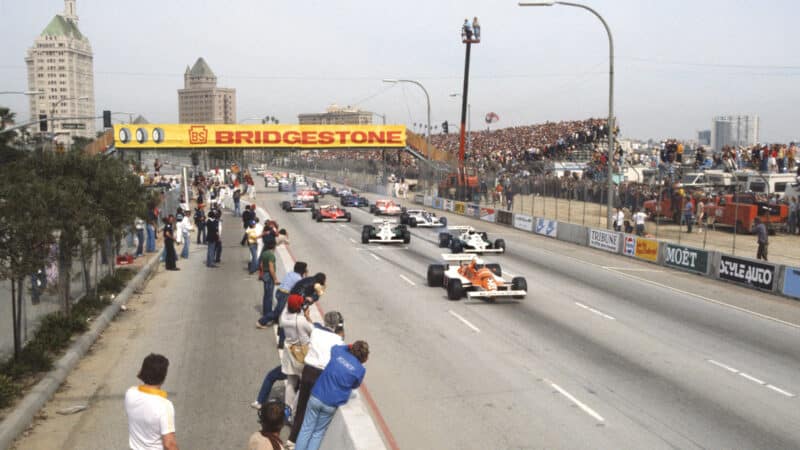
A first pole for Riccardo Patrese, and the first and only pole for Arrows, at the 1981 US GP West
Grand Prix Photo
MS: Arrows had 382 F1 races, came close to winning some, but never achieved that top step. How does that feel all these years later?
“Shadow and Arrows, with the same people, had similar flaws”
JO: Shadow and Arrows, with effectively the same people, had similar flaws. I asked those people at a get-together we have at a local pub, “Why didn’t we win races?” The chief mechanic said one of the main reasons was that I never asked them why the cars broke and it was always the design department that had an excuse. He was right. The team structure meant we did not counsel opinions as to why we had those failures among everyone in the team, not just the design group. Alan and I did not structure the team properly in its moments of failure. That was the problem. But we survived despite the bullying from the top teams.
The best car we had was the A3. We were on pole at Long Beach on Michelin tyres and the other Michelin runners told Michelin not to give us any more tyres. We went from beating some big teams to struggling on Goodyears. Later, in the ’90s, Alan Jenkins designed the Footwork FA16 with successful ground effects, and then, after accidents at Monaco and Imola, the FIA decided the cars had to be slowed down. Ferrari got involved, said we should lose the diffuser at the rear, and we went from the front to the back. Eddie Jordan said, “Welcome to the Piranha Club.” I said, “I’ve been here before.” You have to use all the weapons you have in the box. You have to overcome these things, and some of the big teams were pretty successful long before Arrows came along.
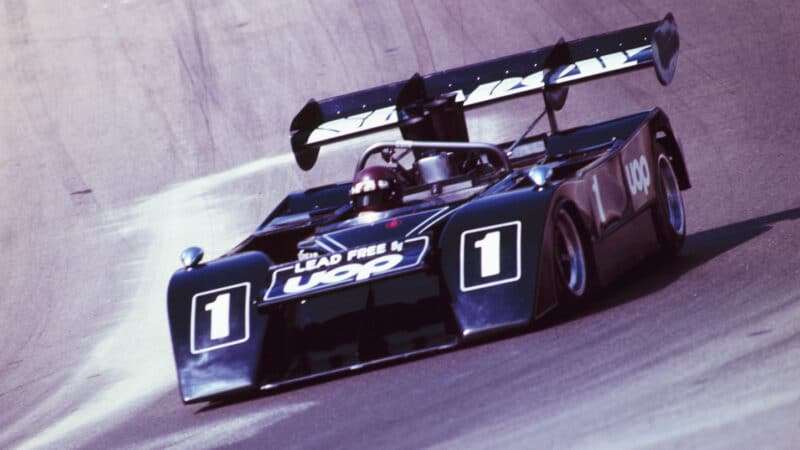
A regular Atlantic hopper, Oliver drove Shadows in Can-Am from 1971-74 – this is the Mk3 of ’72
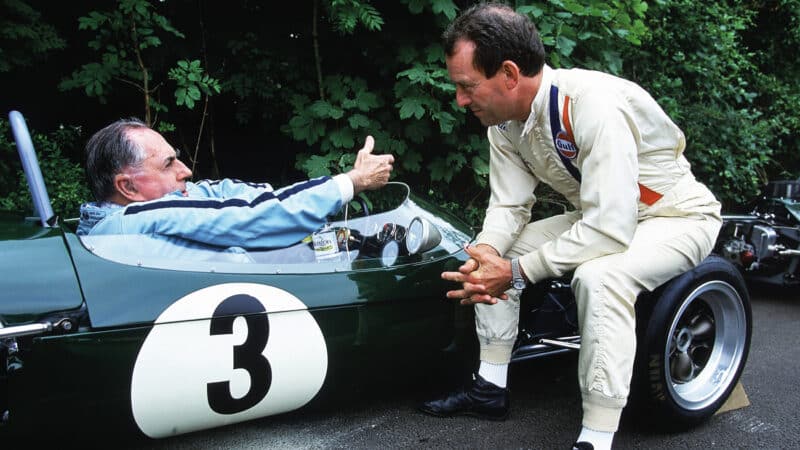
Jack Brabham and Oliver share memories at the Goodwood Festival of Speed in 2001
Getty Images
MS: On a happier note, was it your first love, your passion for driving racing cars, that brought you into historic racing?
JO: Good Lord no, absolutely not. It was all Charles Richmond’s fault. He asked me to race at the Goodwood Revival. I’d let my competition licence lapse, but he helped me get one and I raced a little Porsche. He’d got me hooked again. I asked him to get me a car with a bigger engine next time. I’d sold Arrows, I had money, and I thought it might be a nice, if expensive, hobby. I didn’t have much else to do so I kept racing historics, and in some very nice cars.
